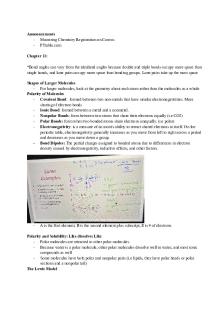Lesson 6 – Chapter 11: The Aggregate Expenditure Model PDF

| Title | Lesson 6 – Chapter 11: The Aggregate Expenditure Model |
|---|---|
| Author | Emily Riordan |
| Course | Macroeconomics |
| Institution | Vincennes University |
| Pages | 2 |
| File Size | 103.9 KB |
| File Type | |
| Total Downloads | 4 |
| Total Views | 146 |
Summary
1. Refer to the table below in answering the questions which follow:
a. If full employment in this economy is 130 million, will there be an inflationary expenditure gap or a recessionary expenditure gap? What will be the consequence of this gap? By how much would aggregate expenditures in co...
Description
Emily Kilker ECON 202 D01 Lesson 6 – Chapter 11: The Aggregate Expenditure Model 1. Refer to the table below in answering the questions which follow:
a. If full employment in this economy is 130 million, will there be an inflationary expenditure gap or a recessionary expenditure gap? What will be the consequence of this gap? By how much would aggregate expenditures in column 3 have to change at each level of GDP to eliminate the inflationary expenditure gap or recessionary expenditure gap? Explain. What is the multiplier in this example? There would be a recessionary expenditure gap of 100 billion, considering equilibrium GDP is 600 billion and full employment GDP is 700 billion. Employment would be 20 million less than at full employment. To eliminate the recessionary expenditure gap, aggregate expenditures would have to increase by 20 billion (700 billion – 680 billion) at each level of GDP. Multiplier = (100/20) = 5
b. Will there be an inflationary expenditure gap or recessionary expenditure gap if the full-employment level of output is $500 billion? Explain the consequences. By how much would aggregate expenditures in column 3 have to change at each level of GDP to eliminate the gap? Explain. What is the multiplier in this example? If the full-employment level of output is 500 billion there will be an inflationary expenditure gap. As a consequence, aggregate expenditures will be excessive, causing demand-pull inflation. Aggregate expenditures would have to decrease by 20 billion (520 billion – 500 billion) at each level of GDP to eliminate the inflationary expenditure gap of 100 billion. Multiplier = (100/20) = 5 c. Assuming that investment, net exports, and government expenditures do not change with changes in real GDP, what are the sizes of the MPC, the MPS, and the multiplier? MPC = 40 billion / 50 billion = 0.8 MPS = 1 – 0.8 = 0.2 Multiplier = 1 / (1 – MPC) = 1 / (1 – 0.8) = 1 / 0.2 = 5...
Similar Free PDFs

Medical Terminology- Lesson 6-11
- 13 Pages

Chapter 11: Lewsin Model, Bonds
- 2 Pages

Understanding The Self Lesson 11
- 14 Pages

Lesson 11 - Apuntes 11
- 3 Pages
Popular Institutions
- Tinajero National High School - Annex
- Politeknik Caltex Riau
- Yokohama City University
- SGT University
- University of Al-Qadisiyah
- Divine Word College of Vigan
- Techniek College Rotterdam
- Universidade de Santiago
- Universiti Teknologi MARA Cawangan Johor Kampus Pasir Gudang
- Poltekkes Kemenkes Yogyakarta
- Baguio City National High School
- Colegio san marcos
- preparatoria uno
- Centro de Bachillerato Tecnológico Industrial y de Servicios No. 107
- Dalian Maritime University
- Quang Trung Secondary School
- Colegio Tecnológico en Informática
- Corporación Regional de Educación Superior
- Grupo CEDVA
- Dar Al Uloom University
- Centro de Estudios Preuniversitarios de la Universidad Nacional de Ingeniería
- 上智大学
- Aakash International School, Nuna Majara
- San Felipe Neri Catholic School
- Kang Chiao International School - New Taipei City
- Misamis Occidental National High School
- Institución Educativa Escuela Normal Juan Ladrilleros
- Kolehiyo ng Pantukan
- Batanes State College
- Instituto Continental
- Sekolah Menengah Kejuruan Kesehatan Kaltara (Tarakan)
- Colegio de La Inmaculada Concepcion - Cebu











